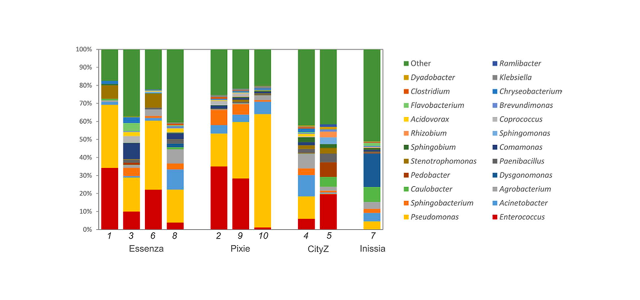find out about: Shared office espresso Machines Are As Gross As you’ll think
Assuming you do not love speedy bacterial colonization.
January four, 2016
if you work in an workplace and use the communal coffee maker, chances are you’ve had the next thought one day or different: Who cleans that factor? maybe you’ve even joked about it with colleagues, every particular person laughing with various degrees of intensity that reflect their very own non-public level of germaphobia. The uncomfortable solution is: hopefully somebody!
Make that very with a bit of luck, given the implications of the “first systematic analysis of espresso machine-related bacteria,” published lately in Scientific stories. A analysis trio from the college of Valencia, in Spain, studied 10 Nespresso machines in each workplace and home settings and found “significant bacterial diversity”—35 to 67 completely different genera (or major sorts), to be precise—just placing out within the inner drip tray below the discarded tablets. They describe the bacteria’s colonization process as “fast,” “rich,” and “dynamic.”
So the place of work machine is as gross as you feared. the good news is that there’s no apparent health chance provided that the tray will get “generic” upkeep. “The coffee from some of these machines is completely safe,” co-creator and biology pupil Manuel Porcar tells Co.Design. “The tray containing the wasted drugs must be cleaned with water and soap, or a number of drops of bleach.”
The analysis group chose to review Nespresso machines given the logo’s reputation. the 10 explicit shared and home machines tapped for this pattern were used, on moderate, any place from twice to 12 instances a day. Porcar and colleagues analyzed the drip trays, which seize the drippings of used espresso drugs, with quite a few techniques that incorporated culturing and electron microscopy. among the a whole lot of bacteria spotted within the trays, two major taxa showed up in average to excessive abundance in 9 of the machines: Enterococcus and Pseudomonas.

As a controlled follow-up, the researchers additionally studied the bacterial build-up in a model new Inissia Krups computer (also made by way of Nespresso), which acquired three makes use of a day over two months. common diagnosis published high adaptation and instability among the micro organism during the first month, steadying out right into a “more balanced bacterial composition” in a while. After two months the tray’s bacterial profile was again dominated by means of Enterococcus and Pseudomonas—a sign that the machine itself, fairly than the consumer neighborhood, formed the microbial effects.
“I need to stress that micro organism accumulate in the leach tray, now not within the coffee itself,” he says. “Nespresso espresso is microbiologically flawless.”

though the study most effective considered Nespresso machines, Porcar says it’s logical to suspect that other capsule-based totally espresso makers supply strategy to identical bacterial construct-up. He also says it’s “very likely” that at least one of the crucial micro organism are pathogenic, or probably dangerous to health. however, he notes, the same is correct of any setting that’s dwelling to meals waste—kitchen towels, for example, or fridges—with the consistent lesson being: wash frequently.
higher design might help people maintain their machines easy. Porcar says the researchers knowledgeable Nespresso that drip trays must have rounded corners slightly than squared ones, which might be tougher to wash and therefore extra prone to grow to be bacterial shelters. As for why espresso-maker bacteria had escaped scientific attention up to now, he says the presence of caffeine, identified to inhibit bacterial increase, would possibly have discouraged any cautious study.
“it’s indeed surprising that heaps of microbial ecologists drink espresso and never did this type of diagnosis prior to,” he says.
[Top Photo: Noel Hendrickson/Getty Images]
fast company , read Full Story
(27)














